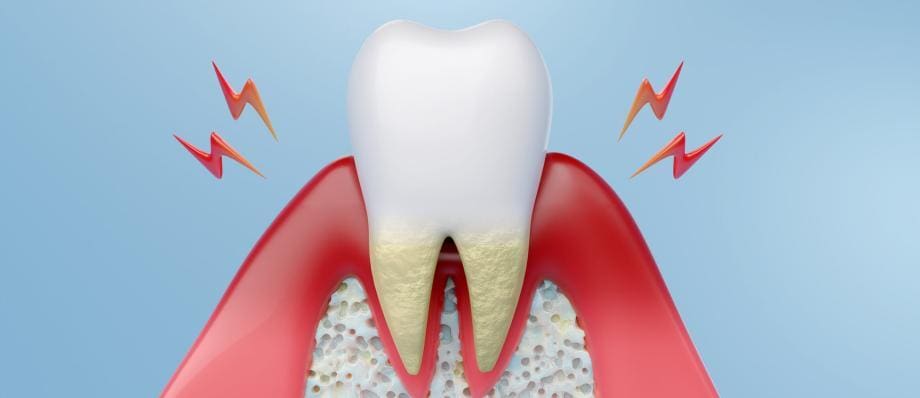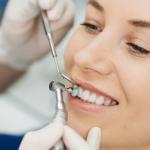A loose tooth can be a disconcerting experience, both for children and adults. It is a common dental problem that can occur due to various reasons. While loose teeth in children are a normal part of their development as they make way for permanent teeth, loose teeth in adults can be a cause for concern. In this article, we will explore the causes, prevention, and treatment options for loose tooth, aiming to provide a comprehensive understanding of this dental issue.
Causes of Loose Tooth
- Gum Disease
- Trauma or Injury
- Bruxism (Teeth Grinding)
- Hormonal Changes
- Osteoporosis
Gum Disease
One of the leading causes of loose tooth in adults is gum disease, also known as periodontal disease. This condition occurs when bacteria build up around the teeth, leading to infection and inflammation of the gums. Over time, gum disease can cause the bone and tissues supporting the teeth to weaken, resulting in tooth mobility.
Trauma or Injury
Any form of trauma or injury to the mouth can cause teeth to become loose. Accidents, falls, or sporting injuries can result in the displacement of teeth from their sockets. The severity of the trauma will determine the extent of tooth mobility and the appropriate treatment needed.
Bruxism (Teeth Grinding)
Bruxism, or teeth grinding and clenching, can exert excessive pressure on the teeth, causing them to become loose. This habit is often subconscious and can occur during sleep or times of stress. Over time, the repeated grinding and clenching can weaken the ligaments holding the teeth in place, leading to mobility.
Hormonal Changes
In some cases, hormonal changes, such as those experienced during pregnancy or menopause, can contribute to loose tooth. Fluctuations in hormone levels can affect the strength of the supporting structures around the teeth, potentially leading to tooth mobility.
Osteoporosis
Osteoporosis, a condition characterized by decreased bone density, can also affect the stability of teeth. As the jawbone weakens due to osteoporosis, it may become less able to support the teeth properly, resulting in mobility.
Prevention of Loose Tooth
- Good Oral Hygiene
- Regular Dental Check-ups
- Mouthguards
- Balanced Diet
- Avoid Smoking and Excessive Alcohol Consumption
Good Oral Hygiene
Maintaining excellent oral hygiene is crucial for preventing loose tooth. Regular brushing, flossing, and rinsing with an antiseptic mouthwash can help remove plaque, prevent gum disease, and maintain strong teeth and gums.
Regular Dental Check-ups
Routine dental check-ups are essential for detecting any signs of gum disease or other dental issues early on. Dentists can assess the health of your teeth and gums, provide professional cleanings, and offer guidance on oral care practices.
Mouthguards
For individuals involved in contact sports or those who grind their teeth, using a mouthguard can protect the teeth from trauma and excessive pressure. Custom-fitted mouthguards are particularly effective as they provide the best fit and comfort.
Balanced Diet
A nutritious and balanced diet contributes to strong teeth and gums. Including foods rich in calcium, phosphorus, and vitamins A, C, and D can help maintain optimal dental health. Avoiding excessive sugar and acidic foods and beverages is also essential to prevent tooth decay and gum disease.
Avoid Smoking and Excessive Alcohol Consumption
Smoking and excessive alcohol consumption have detrimental effects on oral health. They can contribute to gum disease, weaken the immune system, and impair the body’s ability to heal and fight infections. Quitting smoking and moderating alcohol intake can significantly reduce the risk of loose tooth.
Treatment Options for Loose Tooth
- Scaling and Root Planing
- Splinting
- Occlusal Adjustment
- Gum Surgery
- Extraction and Replacement
Scaling and Root Planing
For individuals with gum disease, the initial treatment often involves scaling and root planing. This non-surgical procedure involves removing plaque and tartar from the teeth and smoothing the tooth roots to promote gum reattachment and reduce inflammation. Scaling and root planing can help improve gum health and prevent further progression of gum disease, thus stabilizing loose tooth.
Splinting
Splinting is a technique used to stabilize loose teeth by bonding them together. The dentist may use wires, dental composite, or splinting materials to connect the loose tooth to adjacent stable teeth. This method provides support and reduces the pressure on the loose tooth, allowing it to reestablish its stability and strengthen over time.
Occlusal Adjustment
In cases where loose teeth are caused by bruxism or improper bite alignment, an occlusal adjustment may be recommended. This procedure involves reshaping the biting surfaces of the teeth or using dental appliances, such as orthodontic braces or nightguards, to distribute forces evenly and reduce the pressure on individual teeth.
Gum Surgery
Advanced gum disease that has caused significant bone loss may require surgical intervention. Procedures like gum grafting, bone grafting, or guided tissue regeneration can help regenerate lost bone and tissue, providing better support for loose tooth.
Extraction and Replacement
In severe cases where a tooth cannot be saved or stabilized, extraction may be necessary. After extraction, various replacement options, such as dental implants, bridges, or dentures, can be considered to restore function and aesthetics.
Conclusion
Loose teeth can be a distressing dental issue, but with early detection, proper prevention, and timely treatment, their stability can often be restored. Maintaining good oral hygiene, visiting the dentist regularly, wearing protective mouthguards, and adopting a healthy lifestyle are crucial steps in preventing loose tooth. If you experience any signs of tooth mobility or gum disease, it is important to seek dental attention promptly to prevent further complications. Remember, a healthy smile starts with strong, stable teeth, and investing in dental care can contribute to your overall well-being.





